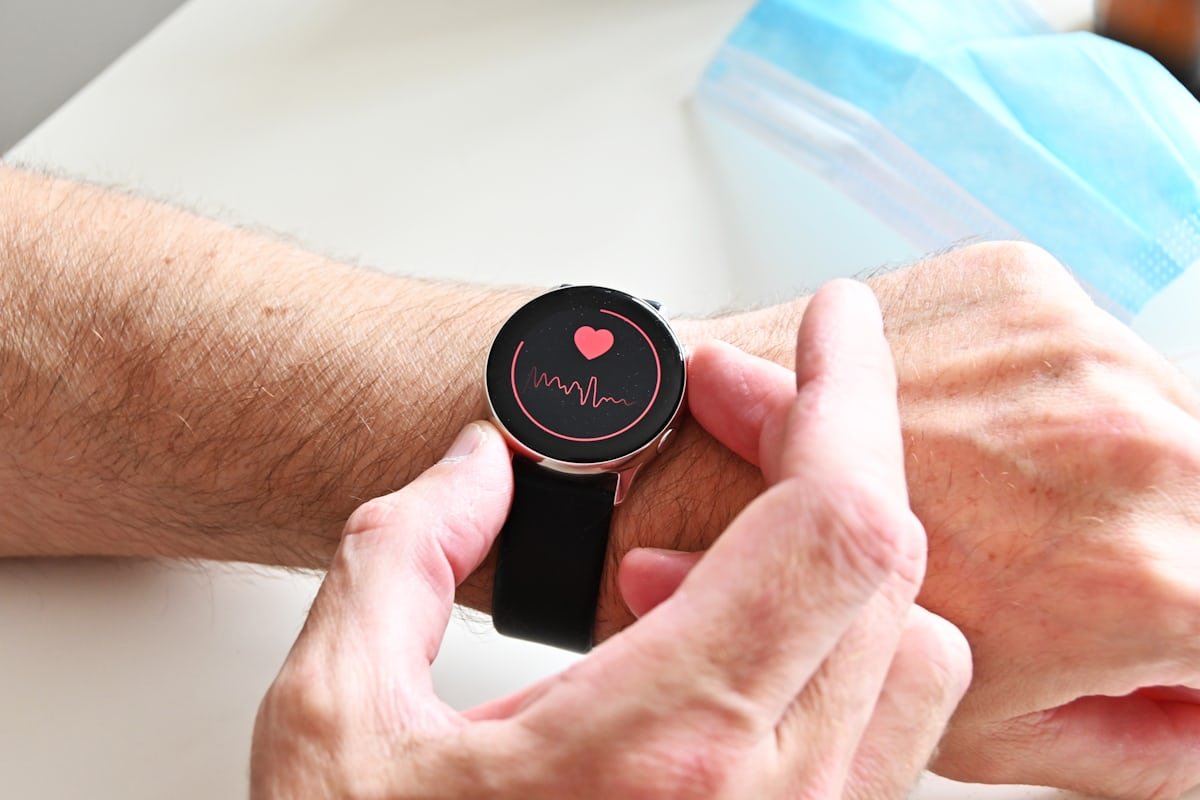Health
What Can You Do With a Health Science Degree

A health science degree offers more than just a path into healthcare—it opens doors to a wide range of rewarding careers. If you’re wondering what can you do with a health science degree, the answer is quite expansive. This multidisciplinary field blends biology, health policy, ethics, and clinical practice, making graduates valuable assets in various professional settings.
Exploring the Scope of Health Science
Before diving into the career options, it’s essential to understand what health science encompasses. This degree combines foundational sciences such as biology and chemistry with applied health subjects like public health, epidemiology, and healthcare administration. Therefore, it equips students with both scientific knowledge and real-world healthcare skills.
Because of its flexibility, a health science degree can lead to direct employment or serve as a stepping stone toward advanced studies in medicine, nursing, occupational therapy, and more.
Clinical Careers You Can Pursue
One of the most common routes for health science graduates is entering clinical roles. These jobs typically involve direct patient care and require additional certifications or education. Some of the most popular options include:
- Physician Assistant (PA): With additional training, health science grads can become PAs, diagnosing and treating illnesses under a physician’s supervision.
- Physical Therapist (PT): A graduate degree is necessary, but a background in health science offers a solid foundation.
- Occupational Therapist (OT): Health science majors often transition into this role, helping patients regain life skills.
- Radiologic or MRI Technologist: These careers require specific certifications but are accessible with a health science background.
Public Health and Community Roles
For those less interested in clinical work, public health presents a meaningful alternative. In these roles, professionals focus on health education, disease prevention, and community wellness. Careers in this category include:
- Health Educator: They design and implement programs that promote healthy lifestyles in schools, workplaces, and communities.
- Epidemiologist: Often requiring a master’s degree, this role focuses on tracking disease outbreaks and creating prevention strategies.
- Community Health Worker: These professionals act as a bridge between healthcare providers and underserved populations.
Moreover, many graduates contribute to global health initiatives, working with nonprofits and governmental agencies to address healthcare disparities.
Healthcare Administration and Management
Another promising field is healthcare administration. A health science degree gives students the leadership and analytical skills needed to run healthcare facilities efficiently. Common roles include:
- Healthcare Administrator: Overseeing the daily operations of hospitals or clinics.
- Health Services Manager: Managing departments, budgets, and personnel in various healthcare settings.
- Medical Office Manager: Supervising front-end operations of private practices or outpatient clinics.
Administrative roles often appeal to individuals who want to impact healthcare systems without working in direct patient care.
Laboratory and Research Careers
If you’re more inclined toward scientific inquiry, a career in research or laboratory science may be ideal. Health science graduates often work in labs or pursue research-focused graduate degrees. Common roles are:
- Clinical Laboratory Technologist: They conduct tests to aid in disease diagnosis.
- Research Assistant: Working alongside scientists to explore new medical treatments or public health trends.
- Biomedical Scientist: With further education, you can engage in cutting-edge research in university or pharmaceutical labs.
Opportunities in Health Informatics
With the digitalization of healthcare, health informatics has become a booming field. Professionals in this domain analyze health data to improve patient outcomes and streamline systems. Job titles include:
- Health Information Technician: Managing and organizing patient records.
- Clinical Data Analyst: Evaluating data trends to enhance service delivery.
- Health IT Specialist: Supporting the software and hardware needs of healthcare institutions.
Health science programs increasingly offer courses that align with these evolving digital careers.
Education and Advocacy
Some graduates feel called to educate and advocate for better health practices. Opportunities in this area include:
- Health Science Teacher: Teaching at the high school or community college level.
- Patient Advocate: Helping individuals navigate complex medical systems.
- Policy Analyst: Shaping public health laws and regulations through evidence-based research.
Not only do these roles make a social impact, but they also offer strong personal fulfillment.
Pathways to Advanced Degrees
If you aim to climb further, a health science degree is a robust foundation for graduate and professional schools. Many students go on to study:
- Medicine (MD or DO)
- Dentistry
- Pharmacy
- Nursing
- Public Health (MPH)
- Healthcare Law
These advanced degrees can unlock leadership positions and higher salaries.
Final Thoughts
So, what can you do with a health science degree? The better question might be: What can’t you do? Whether you’re drawn to clinical care, public health, research, or administration, this versatile degree supports a wide range of meaningful and dynamic career paths. With the healthcare industry projected to grow significantly over the coming decades, your options are not only broad but also future-proof.

Health
A Mysterious Health Wave Is Breaking Out: What You Need to Know

In recent months, reports have emerged from various parts of the world that a mysterious health wave is breaking out. Communities across different continents are experiencing a surge in unexplained symptoms ranging from mild fatigue to more severe respiratory distress. While experts remain puzzled, health organizations have begun preliminary investigations. This article delves into what is known so far, outlines possible causes, and suggests preventive measures you can take today.
Growing Global Concern
Initially, local outbreaks were brushed off as isolated incidents. However, as cases grew steadily across multiple regions, the situation garnered global attention. Authorities are now treating this mysterious health wave as a serious public health event. Notably, the symptoms appear consistent regardless of geographic location, raising additional concerns about its transmission mechanism.
Moreover, the affected individuals report no prior medical conditions, which makes the wave even more perplexing. In some instances, entire families have fallen ill simultaneously, though they had no contact with any known infected individuals.
Symptoms Observed So Far
The symptoms linked to the mysterious health wave include:
- Persistent fatigue
- Shortness of breath
- Muscle aches
- Sudden loss of appetite
- Dizziness
- Low-grade fever
Although these signs may seem common, what sets this wave apart is the intensity and rapid onset of these symptoms. For instance, many patients report going from fully healthy to severely fatigued within 24 hours. Consequently, emergency rooms in affected areas have seen a notable rise in patient visits.
Possible Causes Being Investigated
While no definitive cause has been established, several theories are being explored:
1. Environmental Toxins
A leading hypothesis suggests that airborne pollutants or chemical leaks could be triggering these symptoms. Given the simultaneous occurrence in urban and rural areas alike, widespread contamination is not being ruled out.
2. Viral Mutation
Another possibility is that a new viral strain has emerged, possibly a mutation of an existing virus. Despite similarities to past outbreaks, this health wave lacks certain tell-tale markers, making detection through standard tests more difficult.
3. Psychosomatic Reactions
In some circles, the phenomenon is being partially attributed to mass psychosomatic responses—where stress and fear manifest physically. However, this theory fails to explain the biological abnormalities noted in lab tests.
Who Is Most at Risk?
Interestingly, the mysterious wave does not seem to discriminate by age or health condition. Both young children and elderly individuals have been affected, along with middle-aged adults in peak physical condition.
However, people in densely populated areas appear more vulnerable, possibly due to greater exposure risk. Additionally, those with compromised immune systems should exercise heightened caution, as their recovery times are significantly longer.
How to Protect Yourself
Although the exact cause remains unidentified, there are steps you can take to minimize your risk:
- Wear protective masks in crowded or enclosed spaces.
- Boost your immunity through a balanced diet, regular exercise, and adequate sleep.
- Stay informed via official health advisories rather than social media rumors.
- Maintain hygiene, including frequent handwashing and surface disinfection.
Furthermore, avoid unnecessary travel until more information becomes available. Taking proactive measures now can help mitigate the spread and severity of this condition.
The Role of Government and Health Organizations
Governments and global health bodies have begun mobilizing resources. Task forces are being formed to investigate and contain this outbreak. The World Health Organization (WHO) is currently coordinating with local authorities for data collection and field research.
Although no lockdowns have been mandated, precautionary advisories have been issued. Public health campaigns are also being launched to educate citizens on recognizing early symptoms and seeking medical help promptly.
Speculations vs. Science
It is crucial to distinguish between credible scientific data and online speculation. Social media platforms have become flooded with conspiracy theories and unverified remedies. Unfortunately, misinformation can create panic and hinder actual recovery efforts. Therefore, always consult reliable sources for updates and guidance.
Conclusion
Without a doubt, a mysterious health wave is breaking out, and it is demanding global attention. While scientists and researchers work around the clock to uncover its roots, the general public must remain cautious yet calm. The best defense lies in awareness, preparation, and cooperation.

Health
Which Apps Can Be Connected to Hume Health App

In today’s digital health landscape, integration is key. The ability to link multiple wellness tools into one central platform helps users achieve better insights into their health. One such hub is the Hume Health App, designed to empower users with personalized health recommendations. But a common question remains: which apps can be connected to Hume Health App?
Let’s explore the various apps that integrate with Hume, enabling a smarter, more connected approach to managing your well-being.
Why App Integration Matters in Health Tracking
Before diving into the list, it’s important to understand why app connectivity is so crucial. Modern users rely on multiple tools to track everything from heart rate to meal intake. However, without synchronization, these data points remain isolated. When integrated, they paint a clearer picture of your health.
Furthermore, having a centralized location for your health data reduces the time spent switching between apps. This convenience, paired with enhanced data accuracy, leads to better decisions and more effective goal-setting.
Key Categories of Apps Compatible with Hume
To answer which apps can be connected to Hume Health App, we must look into the categories Hume supports:
- Fitness and activity tracking
- Sleep monitoring
- Nutrition and diet tracking
- Heart rate and biometrics
- Medical record and health data apps
Let’s break these down further.
1. Fitness and Activity Tracking Apps
Hume supports popular fitness trackers that monitor physical activity, steps, and workout data. These apps help users understand their energy expenditure and movement patterns.
Apple Health
If you use an iPhone, Apple Health becomes a seamless connection. It acts as a data repository for other apps like Strava or MyFitnessPal. Hume pulls data directly from Apple Health to provide a comprehensive overview of your fitness habits.
Google Fit
For Android users, Google Fit works similarly. It tracks steps, workouts, heart rate, and more. Once connected, Hume uses this data to suggest lifestyle improvements based on your activity levels.
2. Wearable Device Apps
Wearables play a central role in health tracking. Fortunately, Hume supports many top wearable platforms.
Fitbit
Fitbit tracks activity, sleep, and heart rate in detail. With its easy-to-use dashboard and historical data tracking, connecting Fitbit to Hume allows deeper insights into your lifestyle trends.
Garmin Connect
Garmin users are often more serious athletes. Integrating Garmin Connect with Hume allows access to metrics like VO2 max, training status, and daily movement. These data points enhance Hume’s ability to provide personalized coaching.
3. Sleep Monitoring Apps
Sleep quality is vital for recovery and wellness. Hume integrates with sleep apps to deliver daily scores and long-term trends.
Oura
The Oura Ring app is a standout in sleep monitoring. It tracks sleep stages, recovery, and readiness levels. When paired with Hume, users get a holistic view of how rest affects daily performance.
Withings Sleep
The Withings Sleep app, tied to their sleep tracking mat, provides another integration option. Data on sleep duration, breathing disturbances, and heart rate variability enhance Hume’s sleep analytics.
4. Nutrition and Diet Apps
Nutritional intake impacts energy, mood, and fitness progress. Hume supports leading diet tracking apps for a well-rounded health profile.
MyFitnessPal
One of the most popular food logging tools, MyFitnessPal tracks calories, macronutrients, and meals. When connected, Hume uses this information to correlate nutrition with sleep, energy, and weight changes.
Cronometer
Known for its detailed micronutrient tracking, Cronometer provides valuable data on vitamins and minerals. Hume uses this to recommend dietary adjustments based on deficiencies or excesses.
5. Medical and Health Data Platforms
Hume goes beyond lifestyle tracking by integrating with medical-grade data sources.
Apple Health Records
Through Apple Health Records, users can import lab results, immunizations, and clinical documents. This data adds context to fitness and nutrition metrics, improving the personalization of Hume’s insights.
Human API
Human API serves as a bridge between healthcare providers and wellness platforms. Once linked, Hume can access authorized data from clinics, labs, or insurance platforms—making it a comprehensive health management tool.
How to Connect Your Apps to Hume
Connecting your favorite apps is easy. Inside the Hume Health App:
- Go to Settings > Data Sources.
- Select the app or device you wish to connect.
- Follow the authentication steps.
- Grant data-sharing permissions.
Once done, data synchronization occurs automatically in the background. You’ll start seeing integrated insights within a few hours.
Final Thoughts: Which Apps Can Be Connected to Hume Health App?
So, which apps can be connected to Hume Health App? A wide range—from Apple Health and Google Fit to Fitbit, Oura, MyFitnessPal, and Apple Health Records. These integrations provide users with a powerful, unified dashboard for tracking fitness, sleep, diet, and clinical data.

Health
What Mod Give More Health Minecraft? Top Mods to Boost Your Hearts

When playing Minecraft, having extra health can make all the difference. Whether you’re exploring dangerous caves or battling mobs, more hearts mean better survival chances. But what mod give more health Minecraft players need? Thankfully, several mods are available that allow players to increase their maximum health easily.
Let’s explore some of the most popular and effective mods that provide enhanced health in Minecraft.
Why Increase Health in Minecraft?
Minecraft, by default, gives players 10 hearts or 20 health points. While that might be sufficient for casual gameplay, more experienced players often seek greater challenges. Consequently, higher health capacity becomes necessary. Whether you’re facing powerful bosses or exploring complex dungeons, more health gives you a much-needed edge.
Additionally, health-boosting mods introduce new gameplay mechanics and progression systems. These make the game feel fresh and exciting even for long-time players.
What Mod Give More Health Minecraft Players Love?
Below are some of the top mods that enhance your health pool in Minecraft:
1. Scaling Health
Scaling Health is one of the most popular answers to the question, what mod give more health Minecraft? This mod dynamically adjusts your health based on game progression or difficulty.
- Features:
- Gain extra hearts by finding or crafting heart crystals.
- The game difficulty scales over time, making extra health essential.
- Can be configured via datapacks or server settings.
Moreover, it integrates well with most modpacks and provides server-wide consistency. It’s ideal for hardcore survival worlds and long-term playthroughs.
2. Cyclic
Cyclic is a massive utility mod that offers a bit of everything. It includes items, machines, and even potions that affect your health.
- Health Boosting Items:
- Use heart containers or medallions to increase your max health.
- Easily configurable through the mod’s extensive settings.
Players appreciate Cyclic because it’s not focused solely on health. Instead, it enriches the overall gameplay while giving ways to boost your survivability.
3. Level Up! Reloaded
This mod adds RPG-style leveling to Minecraft. One of the skill trees includes health upgrades.
- Health Upgrades:
- Earn experience and use it to level up your stats.
- Invest points in the Constitution tree to raise your max health.
If you want a more immersive, RPG-like Minecraft experience, this is the perfect mod for you.
4. Tough As Nails
Although this mod primarily adds survival mechanics like thirst and temperature, it also makes combat harder.
- Why It’s Useful:
- Because it increases overall difficulty, players often pair it with health-boosting mods.
- It encourages careful resource management and planning.
In this way, it indirectly supports health-focused gameplay. When paired with Scaling Health, the challenge and reward balance beautifully.
How to Install Health Mods
If you’re new to modding, the idea of installing mods may sound daunting. Fortunately, it’s quite simple.
- Install Forge or Fabric Mod Loader
These are required for running most Minecraft mods. - Download the Mod Files
Visit trusted websites like CurseForge or Modrinth to find your desired mods. - Add Mods to the Game Folder
Place the .jar files into the mods folder in your Minecraft directory. - Launch Minecraft with the Mod Loader
Open the Minecraft Launcher and select the modded profile. Once you enter the game, the mods should be active.
Tips for Using Health Mods
While playing with health-enhancing mods, consider the following tips:
- Balance Difficulty: More health can make you overpowered. Try using scaling difficulty or harder mobs.
- Combine Mods Carefully: Some mods may conflict. Always test in a creative world before starting a survival run.
- Use Config Files: Most mods allow you to adjust their behavior. Use this to fine-tune your gameplay.
These practices ensure a stable, enjoyable, and challenging experience.
Final Thoughts
So, what mod give more health Minecraft players need most? The answer depends on your playstyle. Scaling Health is best for a hardcore experience. Cyclic works well for a balanced, all-around utility. Meanwhile, Level Up! Reloaded adds a full RPG feel.

-

 Blog3 weeks ago
Blog3 weeks agoHow to Start a Health Blog: A Step-by-Step Guide for Beginners
-

 Health4 weeks ago
Health4 weeks agoHealthy camping recipe ideas: Nutritious food for great out
-

 Business3 weeks ago
Business3 weeks agoHow to Start a Home Health Business: A Complete 2025 Guide
-

 Health1 month ago
Health1 month agoHealthy Camping Recipes: Nutritious, Delicious Meals for the Outdoors
-

 Health2 weeks ago
Health2 weeks agoHow to make a manicotti: a step-by-step guide for a classic Italian dish
-

 Health7 days ago
Health7 days agoMega-Personal.net Health Archives: Ultimate Guide to Wellness
-

 Health1 month ago
Health1 month agoIs Chobani Yogurt Healthy? A Nutritionist’s Honest Take
-

 Food2 weeks ago
Food2 weeks agoWhat Foods Are Good for Vaginal Health?
